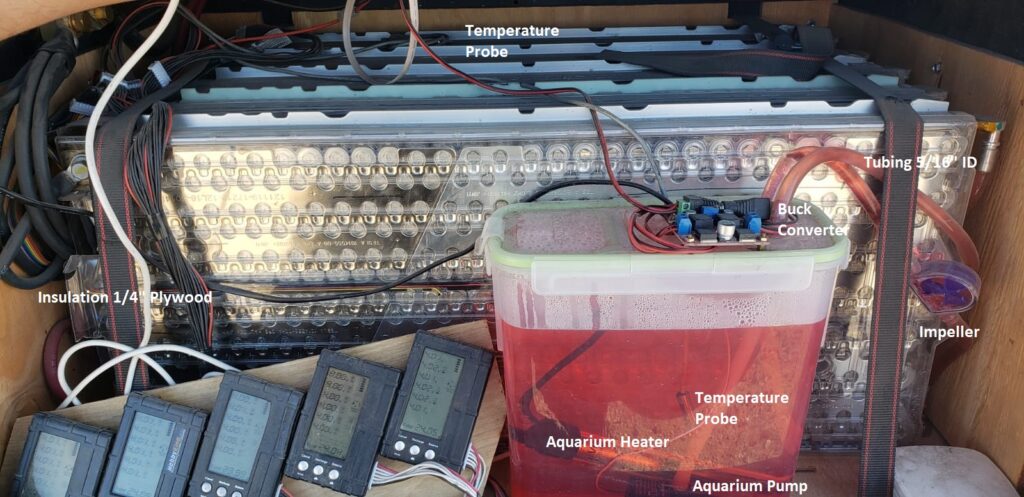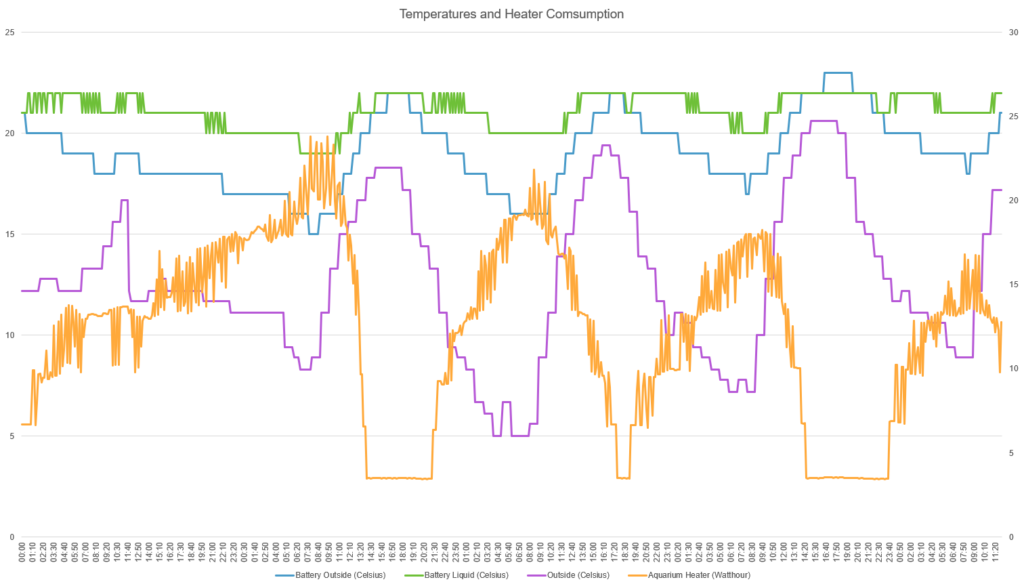Charging Lithium batteries have some temperature limitations. In general should a Lithium battery not be charged when below-freezing temperatures or even when approaching +5 celsius because the chemical process runs very slow at lower temperatures. If a Lithium battery is charged can the Lithium deposit as metal and cause shorts inside the cell.
With the systems in an RV can the charging not be controlled based on temperature so the only option is to keep the batteries warm enough that charging never hurt the batteries. The Tesla Modules have built-in tubing used in the car to manage the temperature of the battery pack. This internal tubing is perfect since the copper tube is touching each cell inside the module and can distribute heating and cooling very evenly. Another option is to ensure the whole box is heated with heating blankets but this is not creating even heating and require good insulation. Because of this was the liquid heating used in our setup.
The container has a small 240 Liter / 80 Gallon per hour pump controlled from the Buck converter on the top. of the lid, using a small Buck converter can control the flow up and down by adjusting the voltage for the pump. Inside the liquid is a 50 Watt Aquarium heater with a thermostat set for 24 Celsius. The tubing used is 5/16 Inner Diameter tubing. Inline is a simple impeller that easily allows checking if the fluid is flowing. The liquid is RV Anti-freeze that is Glycol similar to what is used in the Tesla car.
To ensure the correct temperature is the probes from the Morningstar Charge Controllers used for measurements. Data from the Morningstar Controllers is read every 15 seconds by the RPI and ensures we can always go back and track the status. The graph below shows 4.5 days of data, the temperatures measured, ambient temperature based on a local weather station and the right side has the watt used by the aquarium heater.
As the graph show is the temperature of the liquid never below 20 Celsius and the top of the batteries is never below 16 Celsius even the outside temperature drops to 5 Celsius for many hours during the night. The maximum use of the heater is only 25 Watthour or half of the 50 Watt possible.
With the insulation being only 1/4 inch plywood is the battery bank staying warm enough to charge at any time. We only charge from solar during the day, but if using a generator or being plugged into power can charging occur at any time.


Great content! Super high-quality! Keep it up! 🙂
This is the best Tesla modules heating I’ve seen and I’m going to do this as well.
Do you mind sharing all the parts you bought? Especially the pump and the Buck converter?
Is the Morningstar Charge Controllers required or just for logging?
Thank you so much for sharing this.
Not the exact parts, but these are similar.
Pump is 240 Liter / 80 Gallon: https://www.amazon.com/MOUNTAIN_ARK-Submersible-Amphibious-Hydroponic-Fountains/dp/B010LY7P3Y
Buck Converter DC2DC: https://www.amazon.com/DROK-180057-Converter-Step-down-Stabilizer/dp/B019RKVMKU